The Science of Failure: Black Bottom Cupcakes Edition
Admittedly, there were a few fatal flaws: the first one being, well… I got cocky. After my initial look at the recipe’s ingredients list, I noticed that the recipe used baking soda instead of baking powder. I figured that since Hummingbird Bakery Red Velvet cupcakes, the only other cupcake that used baking soda as a leavening agent, worked perfectly fine at high-altitude without any alterations, these Black Bottom cupcakes would follow suit.
According to the Hummingbird Bakery’s official blog, the mixture for Black Bottoms is supposed to be thick and resemble uncooked brownie mix. In fact, I did a quick google image and found this image of what the batter is supposed to look like from another baking blog:
But as you can see above, my batter was CLUMPY.
It was almost as if there wasn’t enough liquid in the batter! The recipe instructed me to add 1/4 cup sunflower oil, 1 1/2 teaspoons vinegar, and a 1/2 cup of water to 1 1/2 cups flour, 1/2 cup plus 1 tablespoon sugar, 1/3 cup of cocoa powder, and 1/2 teaspoon baking soda. In sum, that would be the addition of approximately 3/4 cups worth of liquid to approximately 2 1/3 cups worth of solid ingredients.
I’ve been reading Michael Ruhlman’s Ratio, which details essential ratios that differentiate various doughs from one another. For instance, he argues that since most pastries and breads are made from the same ingredients; its only their ratio of ingredients that differentiates the final products from one another. For instance, a bread dough consists of five parts flour, three parts water, while a biscuit dough consists of three parts flour, one part fat, and two parts liquid. In detailing these ratios, he provides the framework for home cooks and bakers to start experimenting with recipes and their final outcomes.
Ruhlman doesn’t have a ratio for cupcakes, but he does have various ratios for different cakes: Angel Food cake, sponge cake, and pound cake. The Hummingbird Bakery describes their cupcakes as “sponges”, so I thought it would be best to start there. The ratio for sponge cakes is apparently:
However, I’m not sure if it was a problem of ratios or if it was just… well… me. In my haste to cook up a batch of cupcakes before Sophie and Tim’s wedding, I kinda sped through the recipe and didn’t pay close attention to it — a big fatal flaw. Because in my haste, I neglected to read that the recipe instructed me to increase my mixer’s speed as I slowly added the liquid ingredients to the dry ingredients. And me? Well, I just kinda dumped it all in without increasing the mixer speed at all.
Talk about being a hypocrite and ignoring my own tips and tricks. I betrayed my number 1 cardinal rule: follow the recipe exactly as it is written!
I consulted my bible, How Baking Works, to see if the way things were mixed impacted the final results of the baked good (and therefore, the batter). Lo and behold, the first chapter titled “The Overview of the Baking Process” (so, mind you, the intro of the book) described 10 different mixing methods and what each produced. Subtle differences produced highly variable results.
Grunt.
Okay, fine. So I may have screwed up the chocolate batter very badly in my haste to bake these cupcakes. But the problem was, it wasn’t only the chocolate batter that was giving me problems. I was having trouble with the cheesecake filling too:
Again, straight away, you can see something amiss. The cheesecake filling was wayyyy too watery. The recipe tells me to beat cream cheese, sugar, 1 egg, vanilla, and salt together until the mixture is smooth and fluffy.
I never got the cheesecake mixture to be any of those things. In the end, the mixture had strange white clumps in it (for instance, you can even see clumps sticking to the sides of the bowl in the picture above) but despite these lumps, the mixture still had the consistency of water! Well — lumpy water at least. When I scooped up a tablespoon of the filling to place on top of the clumpy batter, it was like scooping up water to drizzle on rocks. In fact, you can see the results below:

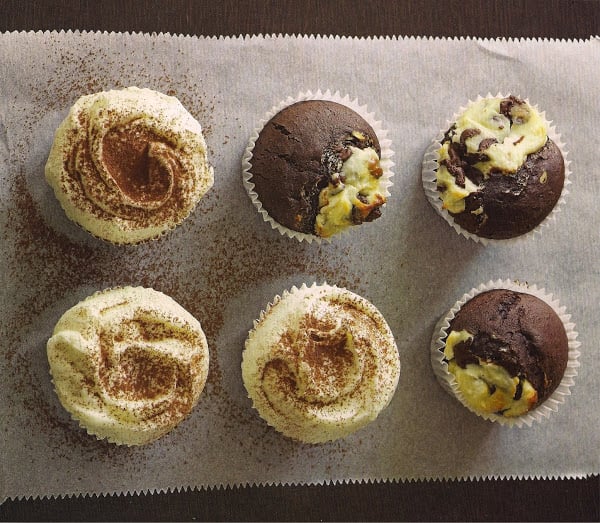

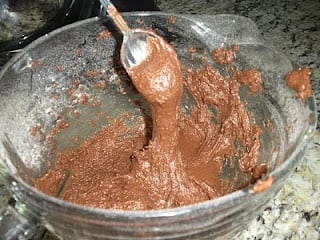
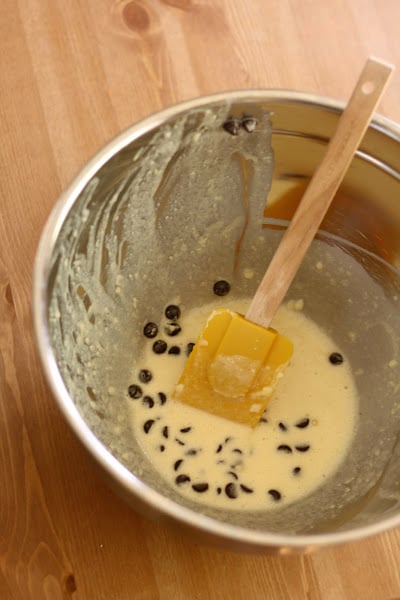
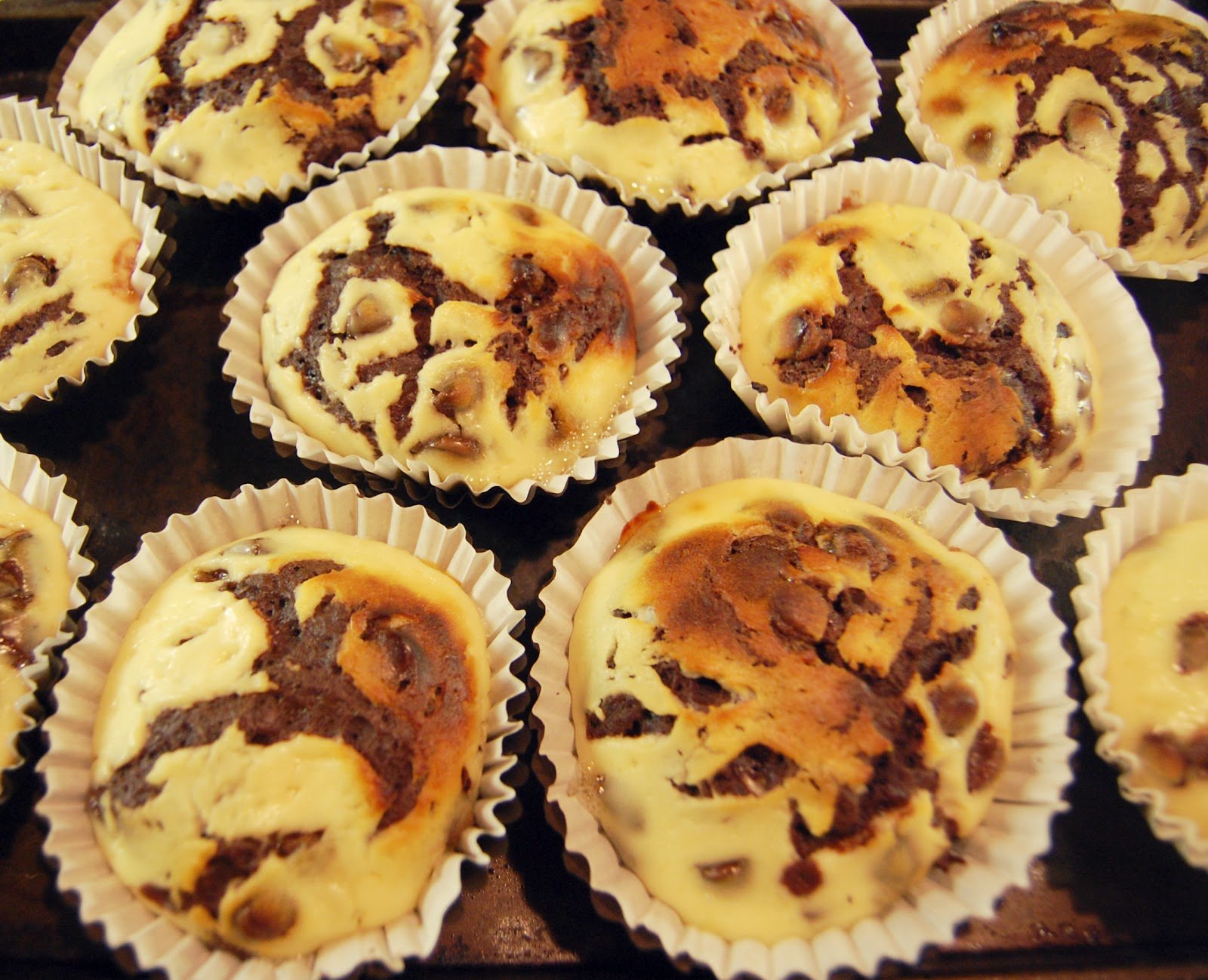
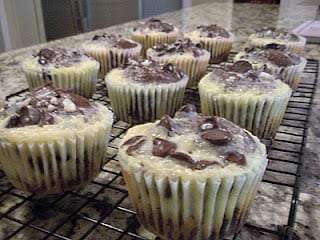
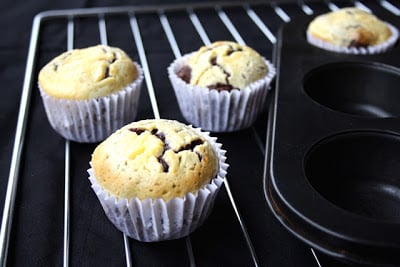
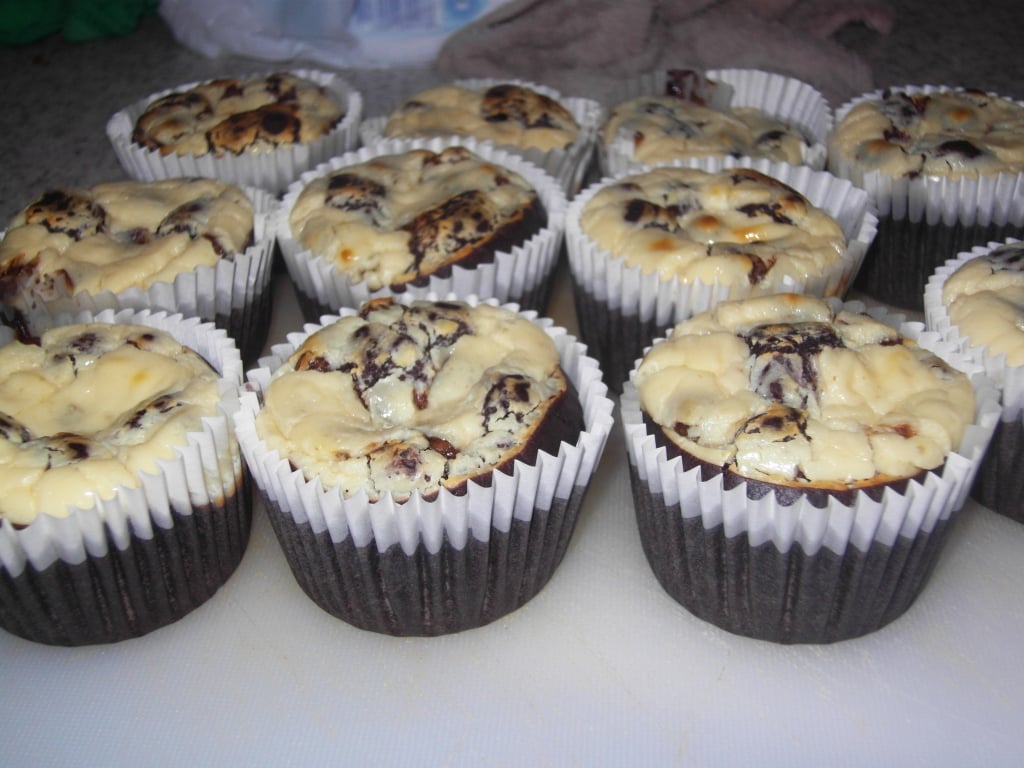

I've only attempted to make black bottom cupcakes once and they turned out awful looking. Tasted ok but I want them to look good too, of course! Thank you for your blog. I've always lived close to sea level so issues arose when I wanted to bake here (east of Colo Springs).
Hi Billie Jo — thanks for reading my blog. I'm working on getting these Black Bottom cupcakes to taste AND look good, and I think I've made some good progress these last few days. Be sure to check the blog soon for the final recipe! Also, if you need any other high-altitude recipes, I've got quite the collection: http://hummingbirdhigh.blogspot.com/p/recipe-cheat-sheet.html
It is indeed quite challenging moving from sea-level baking to high-altitude baking!
Thank you so much for your modified recipes! I've had some luck but I don't bake as much as I like to perfect anything yet. I'll continue to check back! ;o)
Thank you for the compliment! I'm going to add you to my blogroll – I love your writing style!